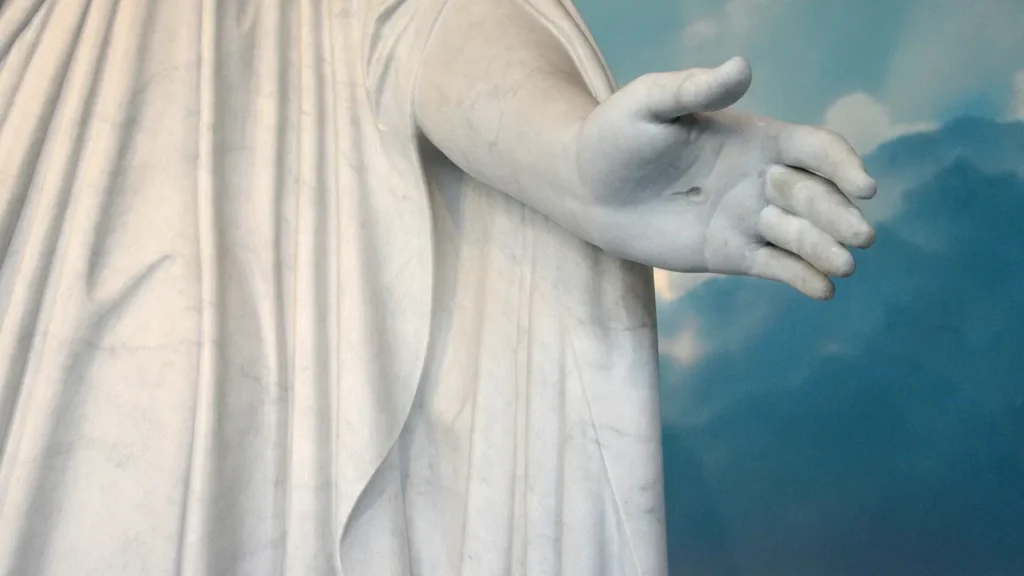
FAIR is a non-profit organization dedicated to providing well-documented answers to criticisms of the doctrine, practice, and history of The Church of Jesus Christ of Latter-day Saints.
FAIR › Scripture Study Resources: Supplement Your Come, Follow Me Study › Study Resources for the Doctrine & Covenants and Church History › Week 16 I am He Who Liveth, I am He Who Was Slain

The Savior’s resurrection was not just a historical event; it means He is actively involved in our lives. He speaks through modern prophets, guides His Church, and offers personal revelation to those who seek Him (Doctrine and Covenants 110:4). We can find comfort and strength in knowing that Christ is a living, present force in our lives.
Joseph Smith and Oliver Cowdery saw the Savior in the Kirtland Temple and bore witness of His living presence (Doctrine and Covenants 110:1-10). Similarly, the Apostles have testified of Him in “The Living Christ.” These sacred experiences strengthen our faith and remind us that Jesus Christ is aware of each of us individually.
The Savior’s victory over death is central to the gospel. Because He was resurrected, all of us—regardless of righteousness—will also be raised to immortality (1 Corinthians 15:22). This doctrine gives hope and meaning to life, reassuring us that death is not the end.
Joseph Smith, who experienced the loss of many loved ones, found peace through revelation that all will be restored to perfect bodies (Doctrine and Covenants 88:14-17). This truth helps us face mortality with faith and look forward to joyful reunions in the next life.
While Christ’s Atonement is available to all, we must exercise faith, repent, and follow Him to receive its full power (Doctrine and Covenants 19:16-19). This requires humility, obedience, and trust in His ability to heal us spiritually.
If you have questions on this week’s reading, please email your questions to us here.
Practical solutions for someone in faith crisis:
Action Step: Bear testimony of the living Christ in personal prayer, study, or conversation.
Expressing testimony strengthens belief. When we declare our faith—whether in prayer, journaling, or discussion—it deepens our conviction and invites the Spirit to confirm the truth to us (Doctrine and Covenants 110:4).
Encouraging Thought:
Action Step: When faced with difficulties, consciously turn to Christ through scripture study and prayer before seeking other solutions.
The scriptures affirm that Christ heals the brokenhearted and carries our burdens (Isaiah 53:3-5; Alma 7:11-13). Trusting Him first invites peace and guidance beyond what the world can offer.
Encouraging Thought:
The Savior restored temple ordinances through divine messengers in the Kirtland Temple (Doctrine and Covenants 110), emphasizing their central role in God’s plan. Understanding and honoring temple covenants brings greater peace and purpose.
Encouraging Thought:
President Gordon B. Hinckley taught, “Every temple, no matter where it is, stands as a symbol of our testimony that life beyond the grave is as real and as certain as is our life here.”
Objective: Help learners recognize the significance of Christ’s Resurrection and how His living presence influences their lives today.
Picture of the Resurrected Christ, copies of The Living Christ, a whiteboard or poster for key insights.
Activity Steps:
Follow-Up Question: How does knowing that Christ lives today impact your daily decisions and faith?
Objective: Help learners understand the significance of the priesthood keys restored in the Kirtland Temple and how they affect us today.
A set of physical keys, a printed summary of Doctrine and Covenants 110, pictures of temples.
Follow-Up Question: How can you personally honor and use the blessings that come from these priesthood keys?
Objective: Strengthen learners’ testimonies by exploring how witnesses of Christ—from ancient apostles to modern prophets—confirm His living reality.
Printouts of testimonies (1 Corinthians 15:3-8; Doctrine and Covenants 76:22-24; The Living Christ), a timeline on a board or paper.
Follow-Up Question: How can sharing our testimony of Christ strengthen both our faith and the faith of others?

FAIR is a non-profit organization dedicated to providing well-documented answers to criticisms of the doctrine, practice, and history of The Church of Jesus Christ of Latter-day Saints.
We are a volunteer organization. We invite you to give back.
Donate Now